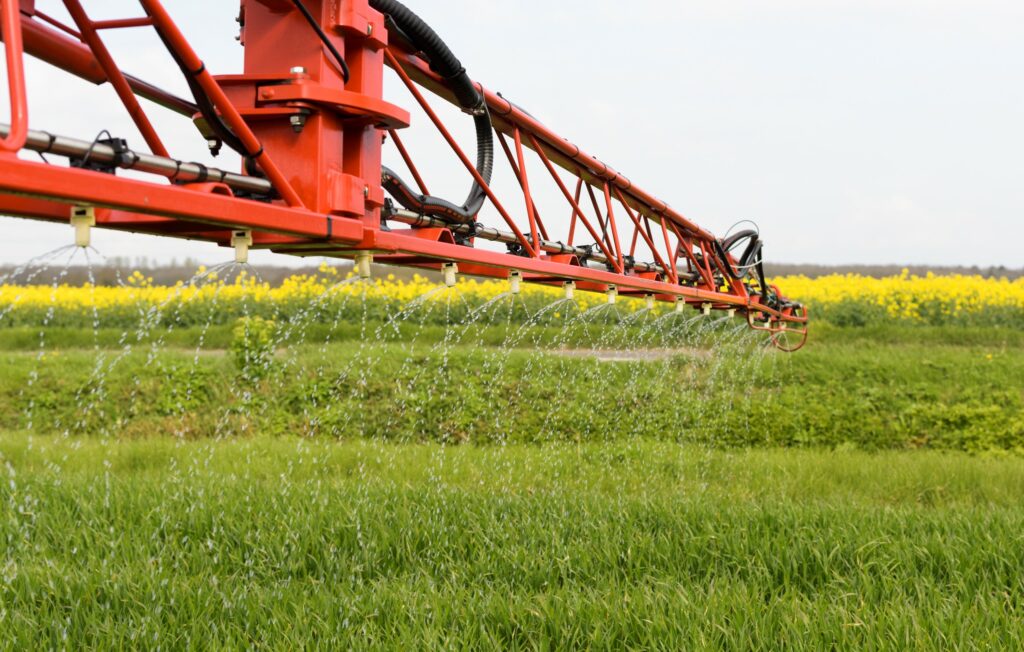Written by Rob Nightingale from Frontier
“Yield is king!” This was a tag line in farming throughout my career as a farm manager and agronomist. Interestingly, now as a technical sustainability specialist, it’s a phrase finding resurgence again.
At times in our history it has probably been more pertinent than others, for example during the second World War when the UK was cut off from imports and the onus on domestic production and supply was significant. Since then, however, conversations about yield have typically centred around profitability.
Being profitable has often meant producing as much yield as possible from a piece of land, ideally with minimal investment to ensure the best returns. However, in the last 30 years, UK wheat yields have plateaued and rather than reaching for the highest, the focus shifted to aiming for the optimum.

This was the case when I started as a farm manager and continued as an agronomist – matching inputs to outputs and keeping the cost of production per tonne in mind. Since moving to my technical sustainability role, yield is indeed still king, but the narrative around what that looks like in today’s agricultural landscape has shifted again.
But, why? To put it simply, in the UK we have some of the best yielding land in the world. The global winter wheat average for the last five years was 3.53t/ha, whereas the UK average for the same period was 8.05t/ha. If we consider that comparatively, you could say that every hectare in the UK yields 2.2 times more than the global standard.
Of course, this doesn’t mean we should farm the entirety of the UK. We have incredible flora and fauna here and, importantly, we rely on that biodiversity to sustain and enhance the farmed environment we depend on. Instead, where crops are being grown, the priority now is to optimise those areas to deliver the highest yield with the lowest environmental impact, ensuring sustainable, resilient farming systems that delivers for the long term.
With the benefit of hindsight (it is 20:20 after all), the ‘optimum yield’ can seem clear, but basing the experience of one season on the next is never a guarantee. Instead, it’s about ongoing monitoring to understand what the yield potential truly is, using those insights to better understand what the picture could look like next time.
Reviewing crop input strategies is an important part of this and we’re continually investigating solutions that support growers to adopt approaches based on applying the right amount in the right place; matching crop need.
If we look at nitrogen requirements in wheat for example, calculating optimum applications might seem a relatively straightforward exercise on paper. A crop of wheat’s offtake is the amount of nitrogen removed from the field, otherwise expressed as yield (dry matter) x grain nitrogen (%). For example:
8t/ha yield x 11% grain protein = 6800kg/ha x 1.93% nitrogen = 131kg grain nitrogen offtake.
Once we have this figure we then need to account for the nitrogen taken up by the crop to produce roots, stems and leaves that doesn’t get transferred into the grain by harvest.
The proportion of nitrogen in grain is typically around 68%, so we divide the grain nitrogen offtake by 68% to get the total nitrogen uptake. For example:
131kg grain nitrogen offtake ÷ 68% = 193kg/ha total nitrogen uptake.
If we think back to the five-year UK average of just over 8t/ha at 11% protein, based on the above calculations we therefore need the crop to take up 193kgN/ha from all sources. Simple, right? Not quite. How we get enough nitrogen there in the first place is key.
To maintain or even improve the yields we see in the UK, it’s important to create conditions where adequate nitrogen can be taken up by the plant to support grain production. The challenge our industry has is how to achieve these optimum levels.

Today, agriculture relies on mineral fertilisers as its predominant nitrogen source; with nitrogen produced by the Haber-Bosch process estimated to support food production for nearly half the world’s population.
However, with a growing focus on the sustainability credentials and carbon footprint of food production, exploration into ‘greener’ fertilisers is growing. Of course, moving away from the ‘norm’ isn’t a process that can happen overnight without there being wider impacts on crop production.
It’s therefore important to look at how to make the most of current practices too. For example, setting rotations up to get the maximum from soil nitrogen supply for those crops with a higher nitrogen demand. This could be along the lines of using grain legumes i.e. incorporating peas and beans, or even approaches such as undersowing with clover to help retain and increase nutrients for future crops.
Measuring the amount of available nitrogen in the soil provides a better understanding of how much additional nitrogen is needed to supply the crop too. Assessing biomass through precision services such as SOYL provides insight into nutrient levels across the farm and individual fields, supporting more targeted, variable applications with nitrogen doses subsequently adjusted higher or lower to suit demand.
At the end of the season, the results from in-field grain analysis and harvest sampling provide the equivalent of a ‘report card’, detailing how well a crop’s needs were met and therefore what worked and what needs reviewing. This data combined with the amount of applied nitrogen can help calculate a nitrogen use efficiency (NUE) score – a great measure for understanding how and where inputs may need adapting.
This calculation can provide a lot of insight into where nitrogen has been used and the yield potential of a field. For example, feed wheat’s optimum yield is seen when grain protein is at 10.8% protein. Using that as a benchmark, it can help in identifying whether nitrogen has been over or under-applied, if there is an issue with crop uptake or if the yield is lower than the potential of the field in question. If we look again at the UK vs. global average, any ‘lost’ yield potential is therefore a waste.
In my current role looking at the sustainability of farming systems, I spend a lot of time discussing production data and how to interpret the insights gathered during the process of growing a crop. This includes fertiliser product use, tillage type and yield principally, but reporting can be broadened to encompass much more, such as grain quality for example.
By collating this information, powerful data sets can be constructed and the insights gathered can support all parties of a supply chain, from farmer to grain processer, to continually advance the future of food production and make the right moves towards a more sustainable future. I always stress too that it isn’t the data in and of itself that is ‘valuable’, it’s the story it tells, the understandings it can generate at scale and the time and effort taken to do that.
Truly, I believe that UK farming is some of the best in the world, and it is intrinsic to supporting future improvements to our environment. There are a lot of positives to share about our industry and the ever-evolving science, innovation and forward-thinking approaches so many adopt and explore. Recording more of this better equips us to share this work even more widely, including to those buying the products derived from this work.
Yield is king when we’re talking about sustainability. Getting more from less in the right ways drives all of us to be more efficient. This is not just a discussion around land sparing vs. land sharing, it’s about striking the right balance between food production and the environment, doing the right things in the right places and for the right reasons. The story of how and why we do it is one we can all help to capture – not only can we all learn from it, but we can share that knowledge (and pride) with so many others too.


